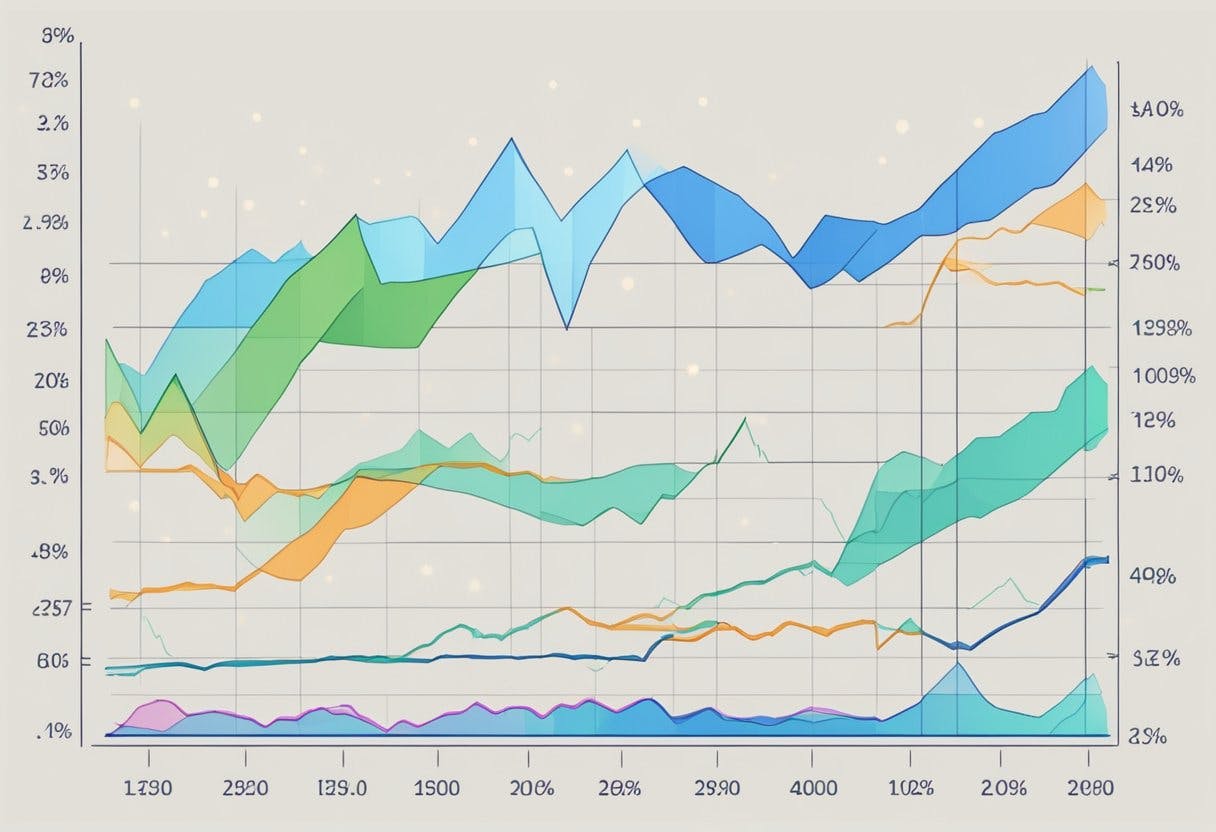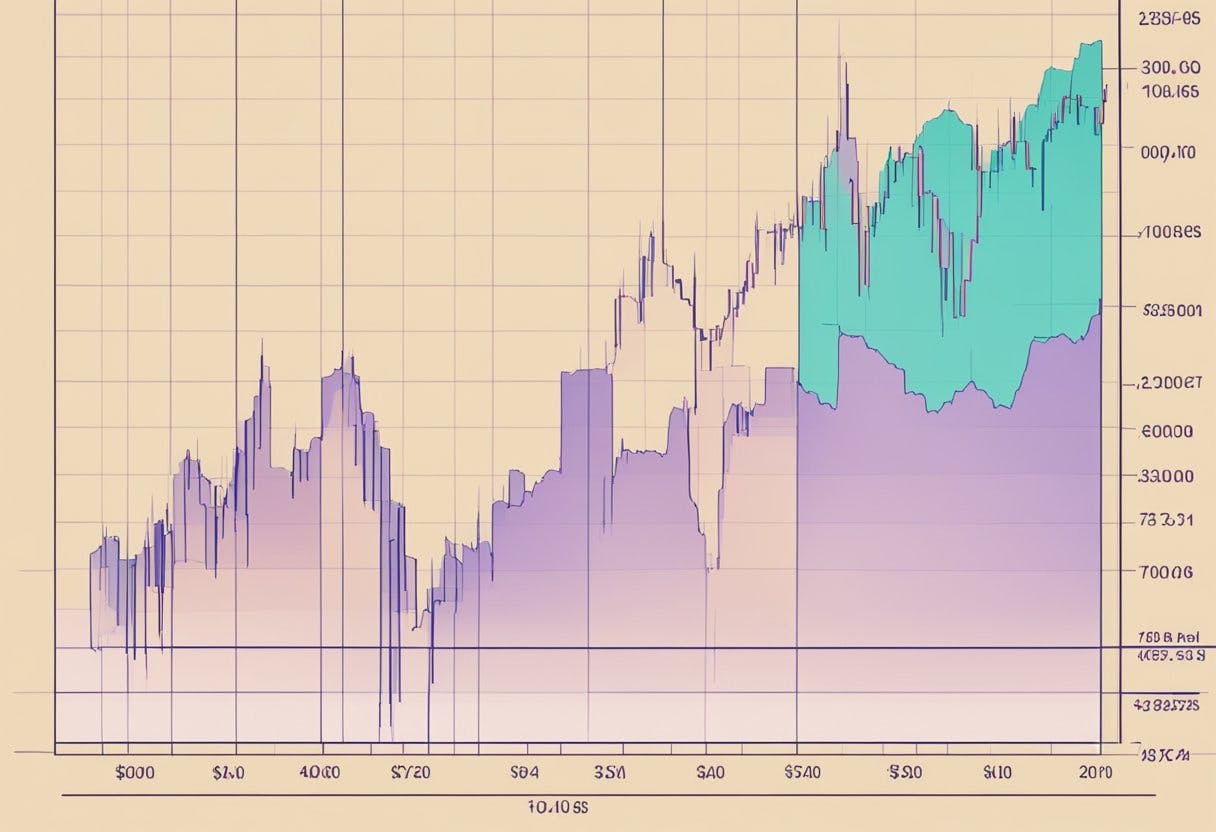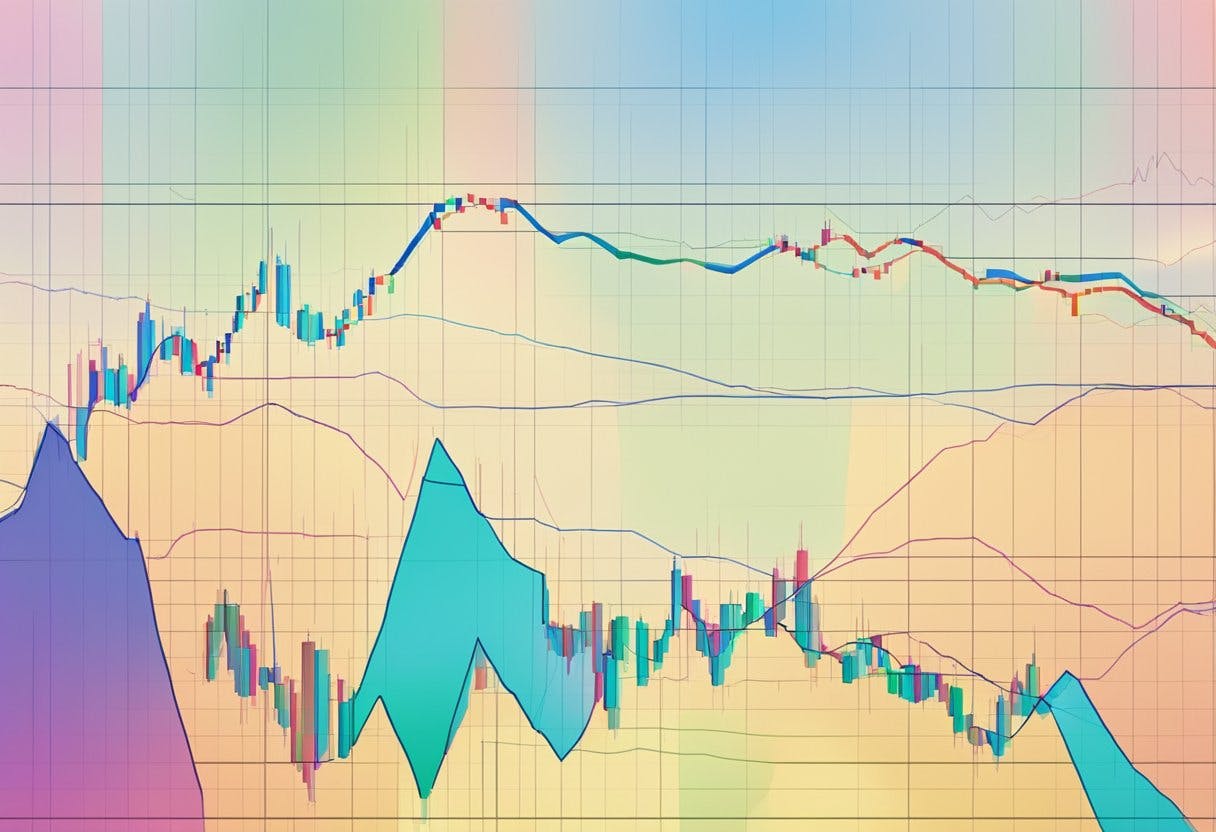
Interest rates have a significant impact on the forex market. Forex traders need to understand how interest rates affect currency values and how to analyze market movements to make informed trading decisions. This article will explore the fundamentals of forex markets, the dynamics between interest rates and forex, and the importance of risk management in forex trading.

Forex markets are the largest financial markets in the world, with trillions of dollars traded daily. Forex trading involves buying and selling currencies with the goal of making a profit. Currency values are affected by a variety of factors, including economic indicators, political events, and interest rates. Interest rates are one of the most important factors that influence currency values, as they affect the cost of borrowing and lending money.
When interest rates rise, it becomes more expensive to borrow money, which can lead to a decrease in spending and investment. This can slow down economic growth and cause a decrease in the value of a country’s currency. Conversely, when interest rates fall, it becomes cheaper to borrow money, which can stimulate spending and investment and increase economic growth. This can lead to an increase in the value of a country’s currency.
Fundamentals of Forex Markets

The forex market is a global decentralized market for the trading of currencies. It is the largest financial market in the world, with an average daily trading volume of over $5 trillion. The forex market is open 24 hours a day, five days a week, and is accessible to traders worldwide.
Role of Central Banks
Central banks play a crucial role in the forex market. They are responsible for setting monetary policy, which includes setting interest rates. Interest rates have a significant impact on the value of a currency, and changes in interest rates can cause fluctuations in exchange rates.
For example, when a central bank raises interest rates, it makes that currency more attractive to foreign investors, which can lead to an increase in demand for that currency and a rise in its value. Conversely, when a central bank lowers interest rates, it makes that currency less attractive to foreign investors, which can lead to a decrease in demand for that currency and a fall in its value.
Some of the most influential central banks in the forex market include the Bank of England, the Federal Reserve, and the European Central Bank.
Understanding Currency Pairs
Forex trading involves the buying and selling of currency pairs. A currency pair is the quotation of two different currencies, with the value of one currency being quoted against the other. For example, the EUR/USD currency pair represents the value of the euro against the US dollar.
Currency pairs are typically traded in lots, with each lot representing a standard unit of the base currency. For example, a standard lot of the EUR/USD currency pair represents 100,000 euros.
Influence of Economic Indicators
Economic indicators are statistics that provide information about the state of a country’s economy. They can have a significant impact on the value of a currency and are closely watched by forex traders.
Some of the most important economic indicators include the Consumer Price Index (CPI), which measures inflation, employment statistics, which provide information about the labor market, and economic growth, which measures the increase in a country’s Gross Domestic Product (GDP).
Overall, understanding the fundamentals of the forex market is crucial for successful forex trading. By keeping an eye on central bank policy, understanding currency pairs, and monitoring economic indicators, traders can make informed decisions about when to buy and sell currencies.
Interest Rates and Forex Dynamics

Interest rates are a crucial factor that impacts the forex market. Changes in interest rates can cause fluctuations in currency values. Forex investors need to have a deep understanding of how interest rate changes can affect the forex market.
Interest Rate Impact on Currency Values
Interest rates have a direct impact on currency values. When a central bank increases interest rates, it makes borrowing more expensive. This can lead to a decrease in borrowing and lending activity, which can slow down economic growth. As a result, the demand for the currency may decrease, leading to a decrease in its value. Conversely, when a central bank lowers interest rates, it makes borrowing cheaper, which can increase borrowing and lending activity and stimulate economic growth. This can lead to an increase in demand for the currency, leading to an increase in its value.
Carry Trade Strategy
The carry trade strategy is a popular forex trading strategy that takes advantage of interest rate differentials between two currencies. In this strategy, traders borrow money in a currency with a low-interest rate and invest it in a currency with a higher interest rate. The goal is to profit from the interest rate differential. However, this strategy also involves risks. If the currency with a higher interest rate depreciates against the currency with a lower interest rate, the trader may face losses.
In conclusion, interest rates have a significant impact on the forex market. Understanding how interest rate changes can affect currency values and implementing appropriate strategies can help forex investors make profits and avoid losses.
Analyzing Market Movements

To make informed investment decisions in the forex market, traders need to analyze market movements. There are several tools and techniques available to help traders analyze market movements and make profitable trades.
Technical Analysis Tools
Technical analysis is a popular method used by traders to analyze market movements. It involves studying past market data, such as price and volume, to identify patterns and trends. Technical analysis tools include charts, indicators, and oscillators.
Charts are visual representations of market data and can be used to identify trends and patterns. The most common types of charts used in technical analysis are line charts, bar charts, and candlestick charts. Indicators are mathematical calculations based on market data and can be used to confirm trends and identify potential entry and exit points. Examples of indicators include moving averages, relative strength index (RSI), and stochastic oscillator.
Oscillators are indicators that fluctuate between two extremes and can be used to identify overbought and oversold conditions. Examples of oscillators include the moving average convergence divergence (MACD) and the commodity channel index (CCI).
Economic Calendar and Events
Another important tool for analyzing market movements is the economic calendar. This tool provides information about upcoming economic events and announcements that can impact the forex market. Traders can use this information to make informed investment decisions and adjust their trading strategies accordingly.
Central banks, such as the Federal Reserve and the Bank of England, play a significant role in the forex market. Interest rate changes made by central banks can have a significant impact on currency pairs and market movements. Traders should pay close attention to central bank announcements and economic data releases to stay informed about potential market-moving events.
In addition to interest rate changes, other economic events that can impact the forex market include gross domestic product (GDP) reports, employment data, and inflation reports. Traders should be aware of these events and their potential impact on currency pairs and market volatility.
By using technical analysis tools and staying informed about economic events and announcements, traders can make informed investment decisions and take advantage of market movements in the forex market.
Risk Management in Forex Trading
Risk management is a crucial aspect of forex trading. It involves taking measures to minimize potential losses while maximizing potential profits. Forex traders need to be aware of the risks involved in trading and take appropriate steps to manage those risks.
Leverage and Its Effects
One of the most significant risks in forex trading is leverage. Leverage allows traders to control large positions with a relatively small investment. While leverage can amplify profits, it can also amplify losses. Therefore, it is essential to use leverage wisely and not over-leverage.
Traders can use different types of leverage, such as 1:10, 1:50, or 1:100. The higher the leverage, the higher the potential risk. Forex traders should consider their risk tolerance, investment objectives, and trading experience before choosing the right leverage.
Diversification Strategies
Another way to manage risk in forex trading is through diversification. Diversification involves spreading investments across different assets, such as different currency pairs or exotic pairs, CFDs, or other financial instruments.
Diversification can help reduce the potential risk of loss in a particular currency pair. However, it is essential to note that diversification does not guarantee profits or eliminate risks entirely. It is crucial to understand the risks involved in each investment and take appropriate measures to manage those risks.
Forex traders can also use stop-loss orders to limit potential losses. A stop-loss order is an order to sell a position if the price falls below a specific level. This can help traders limit potential losses in case the market moves against their position.
In conclusion, risk management is an essential aspect of forex trading. Forex traders must understand the potential risks involved in trading and take appropriate measures to manage those risks. By using leverage wisely, diversifying investments, and using stop-loss orders, traders can minimize potential losses and maximize potential profits.
Global Economic Events and Forex
Global economic events can have a significant impact on the forex market. The forex market is the largest and most liquid market in the world, with over $5 trillion traded daily. As a result, changes in global economic events can have a profound impact on the forex market, with changes in interest rates being one of the most significant.
Effects of Political Changes
Political changes can significantly impact the forex market. For example, when the UK voted to leave the European Union, the GBP/USD exchange rate dropped significantly. Similarly, when Donald Trump was elected President of the United States, the USD/JPY exchange rate increased. Political changes can impact the forex market by changing the economic outlook for a country, which can impact the value of its currency.
Major Economies and Currency Impact
The forex market is impacted by the economic growth and recession of major economies. For example, the Australian economy is heavily reliant on exports, particularly to China. Therefore, changes in the Chinese economy can have a significant impact on the Australian dollar. Similarly, the Japanese economy is heavily reliant on exports, particularly to the United States. Therefore, changes in the US economy can have a significant impact on the Japanese yen.
Central banks can also impact the forex market by changing interest rates. For example, when the Federal Reserve raises interest rates, the USD/JPY exchange rate tends to increase, as investors seek higher returns on their investments. Similarly, when the Reserve Bank of Australia raises interest rates, the AUD/JPY exchange rate tends to increase, as investors seek higher returns on their investments.
In conclusion, global economic events can have a significant impact on the forex market. Changes in interest rates, political changes, and economic growth and recession can all impact the forex market. Traders need to stay informed about these events and analyze their potential impact on exchange rates to make informed trading decisions.
Frequently Asked Questions
How do changes in interest rates influence the forex market?
Interest rates can have a significant impact on the forex market. Central banks adjust interest rates to manage inflation, stimulate economic growth, or control currency appreciation or depreciation. When interest rates rise, borrowing becomes more expensive, and this can have various effects on the currency market. One of the primary influences of interest rates on forex is through the concept of carry trade. When interest rates increase, investors tend to move their capital into higher-yielding currencies, leading to an appreciation of the currency. Conversely, when interest rates decrease, investors tend to move their capital out of the currency, leading to a depreciation of the currency.
Why are high interest rates attractive to foreign investors?
High interest rates are attractive to foreign investors because they offer a higher rate of return on currency invested. This higher rate of return is due to the interest accrued on the invested currency. As a result, foreign investors are more likely to invest in a country with high interest rates, which can lead to an appreciation of the currency.
What is the relationship between inflation and exchange rates?
Inflation can have a significant impact on exchange rates. When inflation is high, the purchasing power of a currency decreases, leading to a depreciation of the currency. This depreciation can lead to an increase in the price of imported goods, which can further increase inflation. Conversely, when inflation is low, the purchasing power of a currency increases, leading to an appreciation of the currency.
How does interest rate differential impact currency value?
Interest rate differential refers to the difference in interest rates between two currencies. This differential can impact the value of the currency. When the interest rate of one currency is higher than the other, investors are more likely to invest in the higher-yielding currency, leading to an appreciation of that currency. Conversely, when the interest rate of one currency is lower than the other, investors are more likely to invest in the higher-yielding currency, leading to a depreciation of the lower-yielding currency.
What are the effects of interest rate adjustments on FX forwards?
Interest rate adjustments can have a significant impact on FX forwards. FX forwards are contracts that allow two parties to exchange currencies at a future date and at a predetermined exchange rate. When interest rates change, the exchange rate at which the currencies are exchanged can also change, leading to gains or losses for the parties involved in the contract.
What is interest rate risk in the context of forex trading?
Interest rate risk refers to the risk that changes in interest rates will impact the value of a currency. This risk can impact both investors and traders in the forex market. Investors who hold a currency for an extended period of time are more exposed to interest rate risk, as changes in interest rates can lead to a depreciation or appreciation of the currency. Traders who engage in short-term trades are also exposed to interest rate risk, as changes in interest rates can impact the value of the currency during the trade.
Read More




